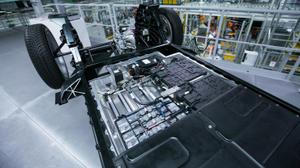
That’s because people are not asking the lifecycle questions.
For perspective, the average German car owner could drive a gas-guzzling vehicle for three and a half years, or more than 50,000 kilometers, before a Nissan Leaf with a 30 kWh battery would beat it on carbon-dioxide emissions in a coal-heavy country, Berylls estimates show.
If you start with the date of delivery and say that they produce less CO2, OK. But what about the amount of energy it take to create that battery and electric car?
Beneath the hoods of millions of the clean electric cars rolling onto the world’s roads in the next few years will be a dirty battery.
Every major carmaker has plans for electric vehicles to cut greenhouse gas emissions, yet their manufacturers are, by and large, making lithium-ion batteries in places with some of the most polluting grids in the world.
By 2021, capacity will exist to build batteries for more than 10 million cars running on 60 kilowatt-hour packs, according to data of Bloomberg NEF. Most supply will come from places like China, Thailand, Germany and Poland that rely on non-renewable sources like coal for electricity.
“We’re facing a bow wave of additional CO2 emissions,” said Andreas Radics, a managing partner at Munich-based automotive consultancy Berylls Strategy Advisors, which argues that for now, drivers in Germany or Poland may still be better off with an efficient diesel engine.
The findings, among the more bearish ones around, show that while electric cars are emission-free on the road, they still discharge a lot of the carbon-dioxide that conventional cars do.
Just to build each car battery-weighing upwards of 500 kilograms (1,100 pounds) in size for sport-utility vehicles-would emit up to 74 percent more C02 than producing an efficient conventional car if it’s made in a factory powered by fossil fuels in a place like Germany, according to Berylls’ findings.
Yet regulators haven’t set out clear guidelines on acceptable carbon emissions over the life cycle of electric cars, even as the likes of China, France and the U.K. move toward outright bans of combustion engines.
“It will come down to where is the battery made, how is it made, and even where do we get our electric power from,” said Henrik Fisker, chief executive officer and chairman of Fisker Inc., a California-based developer of electric vehicles.
For perspective, the average German car owner could drive a gas-guzzling vehicle for three and a half years, or more than 50,000 kilometers, before a Nissan Leaf with a 30 kWh battery would beat it on carbon-dioxide emissions in a coal-heavy country, Berylls estimates show.